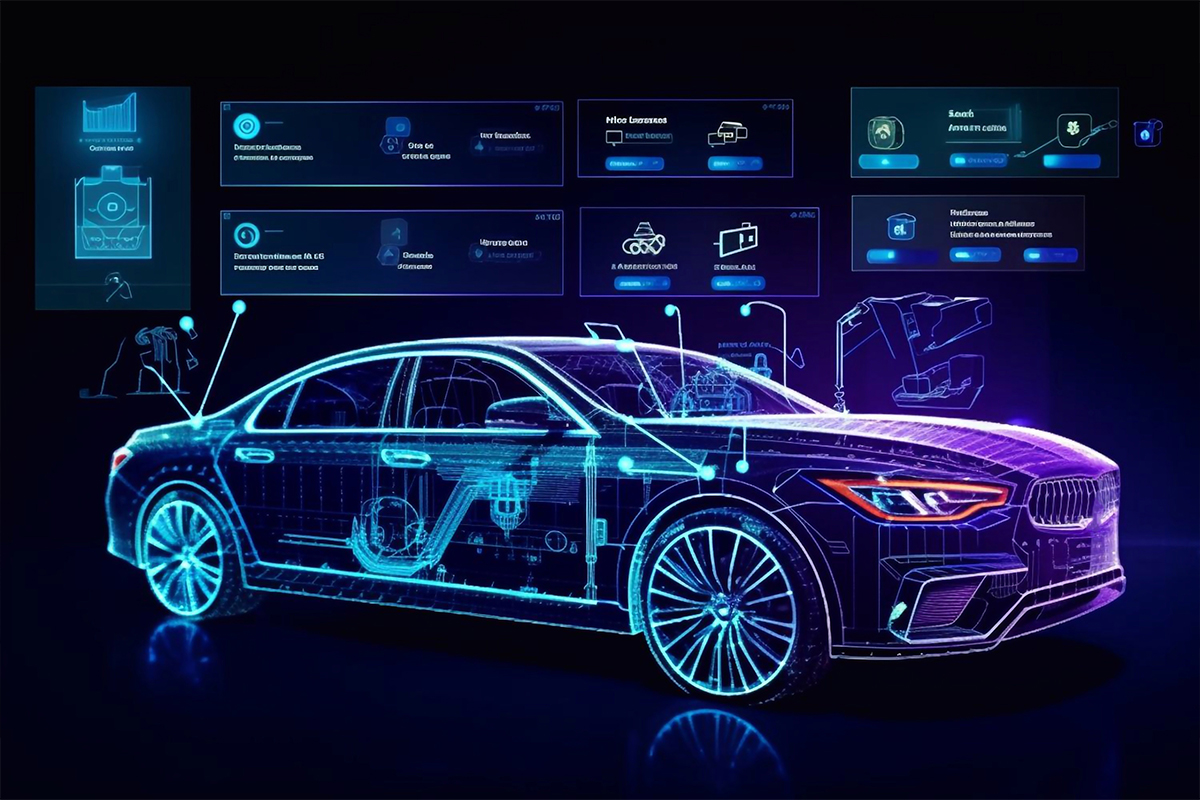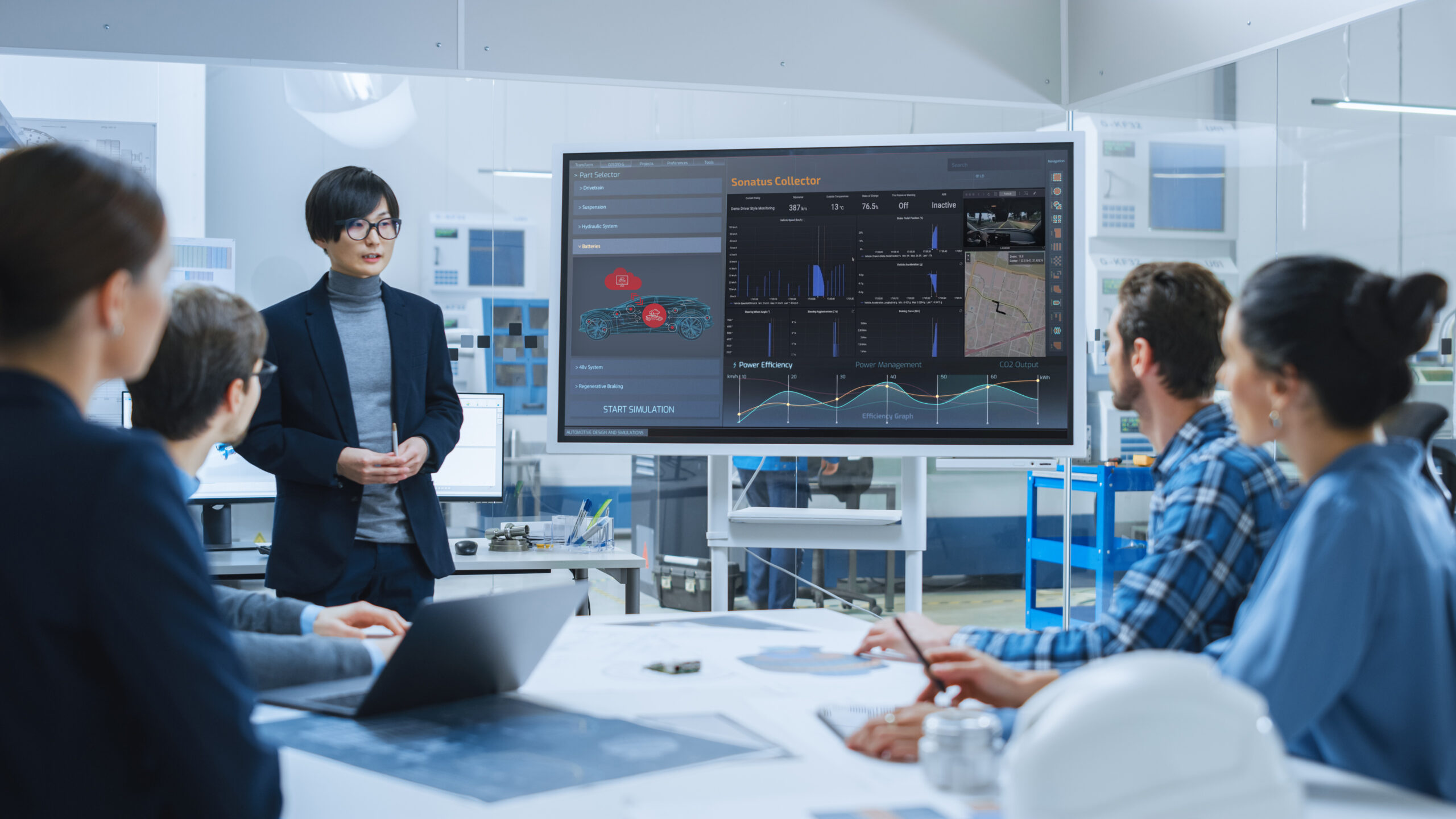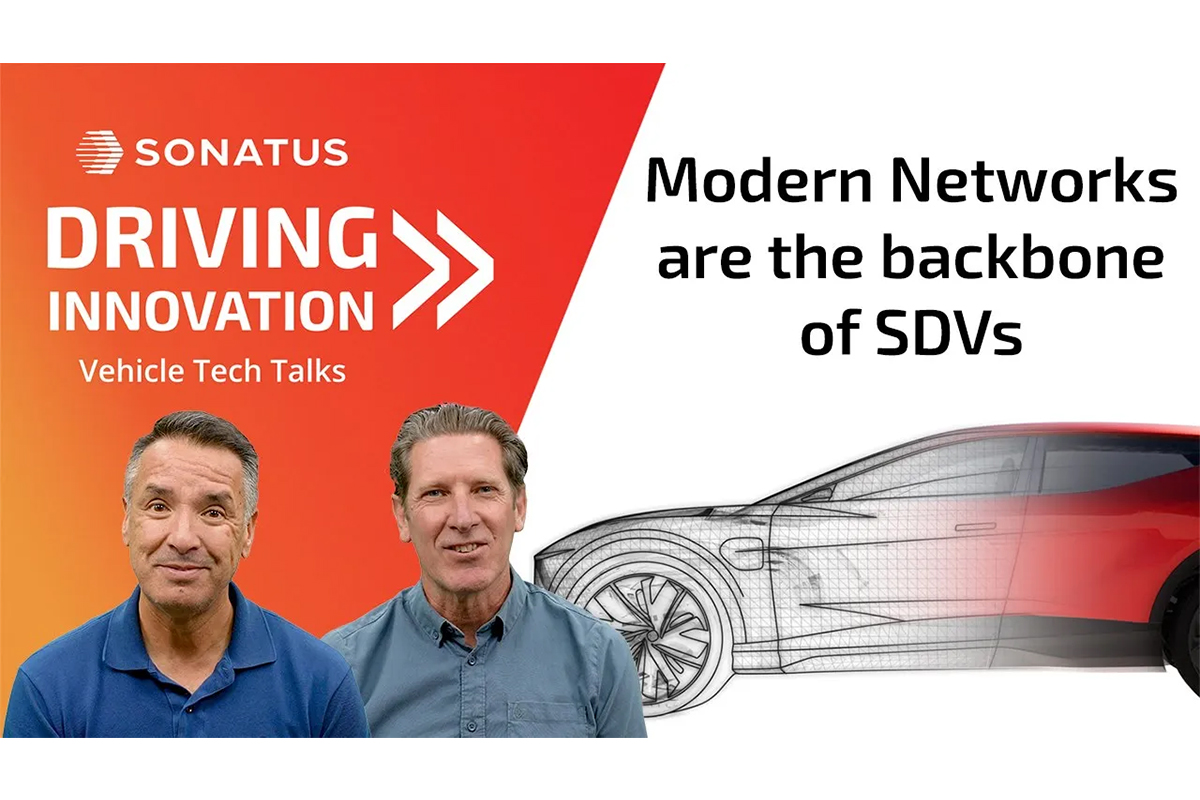Welcome
JOHN: Welcome to The Garage. I’m John Heinlein, Chief Marketing Officer from Sonatus. Today’s topic is all around software-defined vehicles. What is a software-defined vehicle and how do we get there? What are the technical challenges to achieve it? My guest today is Jeff Chao, CEO and co-founder of Sonatus. Jeff, thanks for joining me in The Garage.
JEFF: Thank you for the introduction, John. I’m the CEO and one of the founders here at Sonatus. We deliver vehicle software solutions for OEMs and Tier 1s. Our whole motto is “Accelerating Vehicle Software Innovation.”
JOHN: You know, that’s a perfect segway for what we’re going to talk about today, because software-defined vehicles is a very popular term these days. Pretty much everyone’s talking about it. But I’m not sure that there’s a consistent understanding of what do companies and what do people mean when they say that. So I thought we’d start by defining terms. So what do you think is a software-defined vehicle in your view?
What is an SDV?
JEFF: You’re right. There are a lot of questions around what a software-defined vehicle is. Here at Sonatus, we believe there are four important properties. First, that it’s flexible, which means that a vehicle can adapt to ever-changing requirements and environments. Second thing is that a vehicle needs to be able to be upgraded. So new behaviors, new applications, new features and services throughout its entire lifecycle, which means pre-production to post-production, to aftersales. The third property is that it is data-driven. Now, we all know that data is so very important to not just a vehicle but to the business. So when you’re talking about the amount of data that a vehicle collects and manages and analyzes, that needs to drive technology as well as business models.
The fourth thing about a software-defined vehicle, is that it’s connected. So everything in our world today is connected in order to be able to react quickly, to adapt quickly, to be flexible- a vehicle needs to be connected.
JOHN: That’s a great summary of these four points. Flexible, upgradeable, data-driven and connected. You know, we hear a lot today about how much software is in vehicles already today. And the misconception, I think, is that vehicles are already software-defined vehicles. But the reality is today, the way software is deployed in vehicles is tightly coupled into individual functional units of vehicles and doesn’t provide that flexibility you described.
JEFF: You’re right. What needs to happen is vehicles need to re-architect some of their software to use more modern principles that are found in data centers. In some ways, a vehicle is becoming a data center on wheels, and there are a lot of learnings that we had in the data center around how do you architect and implement flexible software.
JOHN: So let’s spend the rest of our time talking about how the vehicle architecture has to change to enable this shift to software-defined vehicles. Maybe let’s start first with networking, because having a flexible network in the vehicle seems fundamental because if it’s a fixed network, by definition, we won’t be able to extend the capabilities of the vehicle later on.
The importance of modern networking
JEFF: A dynamic modern network is essential to being able to add and upgrade features and applications and services. A static network doesn’t allow that kind of flexibility or agility. So another thing that a modern network brings is a rich set of communication services that really focus on how these applications communicate with one another and exchange data.
JOHN: Right. We’re seeing lots of examples where after shipment, some vendors are rolling out updates to vehicles that add capabilities that weren’t there when the vehicles shipped. And the only way for that to be possible is to be able to connect data sources in the vehicle that weren’t connected originally. And that feels like that networking aspect is critical to that.
JEFF: We used to say the network is the computer, and that was a term that we used in the IT industry and we believe that will hold true in the automotive industry as well.
JOHN: So what kind of standards in vehicle networks do you think are coming out that are enabling this kind of change?
JEFF: We see automotive Ethernet as being the predominant technology, but there are going to be other requirements for safety, security, and resiliency as well.
JOHN: And real-time as well. We’re seeing innovations on top of automotive Ethernet to handle time-critical, time-sensitive networks as well. And so it seems to me you’ll be able to get the benefits of the modern networking while at the same time delivering the requirements of vehicle architecture.
JEFF: That’s all about flexibility as the industry evolves and technology evolves. You have to be able to react to things in real-time. So quicker and quicker. And, absolutely. A new EE architecture, a modern software architecture is all part of that.
JOHN: I think the second aspect is the way ECUs were structured in the vehicle before. Classically, you would have a single-function ECU that would handle the job for its entire lifetime, and there were many, sometimes as many as 150 ECUs around the car doing these specialized functions. There’s a desire from OEMs and Tier 1s, to simplify the vehicle, reduce cost and weight and consolidate these ECUs together where a single ECUs may do multiple jobs. But of course, this makes for a more complicated software environment.
Hardware consolidation
JEFF: The consolidation of hardware requires a lot more software. Modern software technologies like virtualization, containers are required so that you can orchestrate and isolate multiple software applications running on the same hardware.
JOHN: So they can co-exist side by side without causing interference with each other. It also seems to be important because some aspects of the vehicle are safety-critical and many aspects are not safety-critical. It’s okay if the climate control takes a few moments for the fan to start, but you want to make sure the automatic braking or other kinds of systems happen immediately. So it’s important, I think, to separate those safety-critical and non-safety systems.
Data-driven vehicles
The third aspect we talked about is being data-driven. With so much data flowing around the vehicle, it’s both a challenge because on the one hand, you have to manage all that data. On the other hand, it’s an opportunity to create valuable services, potentially monetization and so on. So let’s talk about what are some of the technical challenges we have to surmount to make a vehicle that’s really actively data-driven.
JEFF: I think the biggest challenge that an OEM faces is dealing with the sheer volume of the data that the vehicle generates. You need the right infrastructure in both the hardware as well as the software in order to be able to manage, collect, store, secure, and transmit that data. The second thing you have to be able to do is you don’t need all of the data, all the time. You have to be intelligent about what kind of data that you need and when you need it.
JOHN: And that may change over the lifecycle. There may be times when everything’s operating normally and you don’t need to collect certain data, but you may also have some troubleshooting where you need to zero in on a problem. And so it seems like you want to be able to adjust that dynamically. And that seems a different aspect of software-defined vehicles compared to conventional vehicles where they were very fixed.
JEFF: Within an OEM and across the OEM’s entire ecosystem, there are many consumers of data. And every consumer has a different requirement, a different need, and at different times, and they evolve over time. So the right data solution needs to be adaptable and flexible.
Cloud connectivity
JOHN: The fourth aspect we talked about is being connected. So if you’ve got a vehicle that’s flexible and upgradeable and has all this great data we’ve talked about, I think you only achieve the full promise of that if it’s also connected.
JOHN: The benefits of being connected is that it unlocks the power that the cloud brings. This is important not just for data management, but also in how you deliver new services and features. We believe that OEMs are going to take extensive advantage of the cloud for many different reasons, whether it’s providing services, as you mentioned, things like rapid prototyping and I think even unlocking the connected vehicles of the future where vehicles talk to each other, vehicles talk to infrastructure in the cloud. I think it’s going to be a very powerful use of connected vehicles.
Summary
Thanks, Jeff. This has been a really wide-ranging discussion. We’ve covered a lot of important points. Thanks for joining me today.
On today’s episode, we talked about a software-defined vehicle as having four critical aspects being flexible, upgradeable, data-driven, and connected. In the coming episodes, we’ll dig deeper into each of these aspects, both with experts from Sonatus, as well as industry leaders from other key partners. We hope you’ll join us for future episodes in The Garage. Thanks for joining us and we’ll see you again soon.


